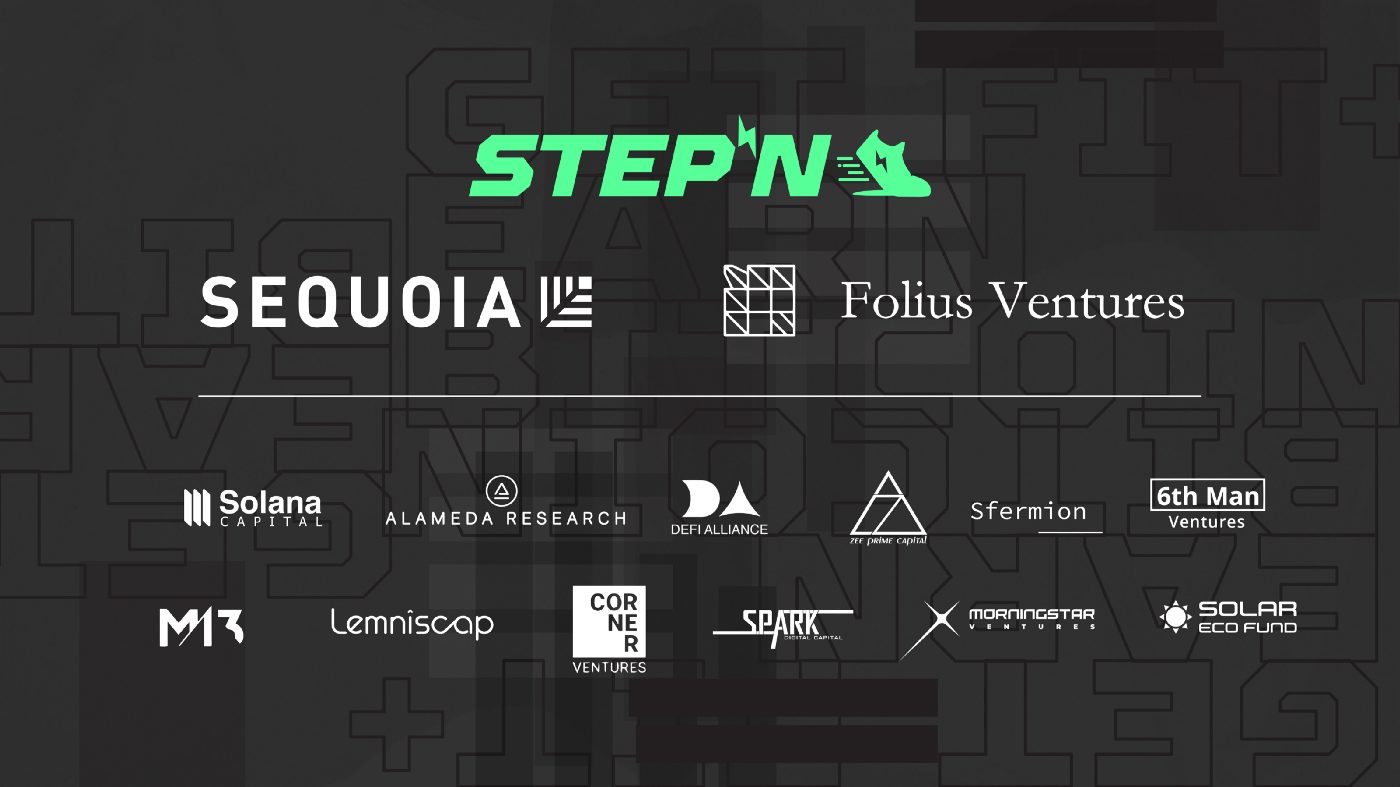
Foundation - from the past to today
Sequoia was founded by Don Valentine in 1972 in Menlo Park, California, at a time when the state’s venture capital industry was just beginning to develop.
Sequoia formed its first venture capital fund in 1974, and was an early investor in Atari the next year. In 1978, Sequoia became one of the first investors in Apple . Partners Doug Leone and Michael Moritz assumed leadership of the firm in 1996.
In 1999, Sequoia established a dedicated investment fund for Israeli startups. In 2005, Sequoia Capital China was established, later followed by Sequoia Capital India.
In 2012, Moritz took a step back from the day-to-day operations of the firm. Leone became Global Managing Partner. Jim Goetz led Sequoia’s US business from 2012 until 2017, when he was succeeded by Roelof Botha.
In 2016, Sequoia hired Jess Lee, making her the first female investing partner in the United States in the firm's history.
In March 2020, Sequoia announced it would hire Luciana Lixandru as its first partner based in Europe.
In October 2021, Sequoia announced it would implement a new fund structure for its U.S. and European business that would allow it to remain involved with companies after their public market debuts.
I want to tell you a fascinating story about how and why an article about the most influential and successful fund in the world appeared on the cryptocurrency channel.
We often perceive crypto outside the context of the global market. But, as we can see, it clearly reacts to the events taking place in it. The sphere can no longer be taken in isolation. And this is logical: it is impossible to count the number of coming-outs from companies (and people involved in them) who confessed their love for crypto over the past year.
Now imagine that the sphere is teeming with investors who supported at an early stage companies that today are worth more than the entire crypto market.
Having many years of experience in promoting and scaling startups from scratch to industry leaders.
On February 17, 2022, Sequoia Cap announced the launch of their own $500-600 million cryptocurrency fund.
ATARI 1975 - somehow often pop up, remember.
APPLE 1978 - on this I, perhaps, will finish the article, thank you all.
ELECTRONIC ARTS 1982 - FIFA, SIMS, NEED FOR SPEED, BATTLEFIELD etc.
ORACLE 1983 - their software keeps the world business.
CISCO 1987 - In 2021, Fortune ranks Cisco first for the second year in a row in its annual list of the 100 Best Companies to Work for based on an employee satisfaction survey.
NVIDIA 1993 - property?
YAHOO 1995 - hello everyone, I'm new here.
PAYPAL in 1999 - to understand Elon Musk's memes, you need to understand the people behind him.
GOOGLE 1999 - what year??
LINKEDIN 2003 - here we evaluate the project team.
YOUTUBE in 2005 is a video platform.
DROPBOX 2007 - file hosting, in 2007.
AIRBNB 2009 is a housing search platform. The partner got the top 1 in the Midas List (more on that) 2021.
WHATSAPP in 2011 - I ran out of fantasy.
INSTAGRAM 2012 - Zuckerberg peeps at the Sequoia what to invest in.
REDDIT in 2014 - this could be your ad.
ZOOM in 2016 - doesn't it seem to you that someone has invented a time machine?
Sequoia Partners are ranked #2 on the Midas List, an annual ranking of the top 100 best venture capital investors in the world.
In total, it includes 11 partners. This is the best indicator among all funds. The A16Zs we know from the crypt number only 5 people.
Say lucky?
Over the past 8 years, the leader of this rating is a partner of Sequoia Capital.
In other words, for 8 years in a row, the best investor in the world is a native of Sequoia Capital.
Back in 17, Sequoia listed on Binance, yes, the fastest growing unicorn in history.
The greatest fund with half a century of experience, connections with companies from Google to SpaceX, which they actively share with those they invest in. A fund dedicated to discovering and supporting the greatest ideas, developing them to multi-billion dollar capitalization. And now he breaks with two feet into the crypt.
Are you sure you don’t want to learn more about it, learn something and consider what they are investing in crypto right now?
How many times have I seen that almost no one betrays them in the list of investors just because of ignorance.
I myself was like that, so I decided to figure it out and share the results with you.
In my work, I have highlighted the most significant and interesting points. After reading this, you will not just learn more about the fund that is worth following to earn more. You will be able to touch those times and the mindset of a company that invested in technologies that completely defined the modern world. It changes the outlook.
History and Principles of the Sequoia Cap
In 1972, semiconductor industry veteran Don Valentine founded Sequoia Capital. At that time, the concept of "Silicon Valley" was only 2 years old. The experience of the founder allowed to discover the potential in Atari and Apple at an early stage.
To travel back in time, imagine that you personally know every employee of a company that will then be known throughout the world. And Don was the one who knows.
This is what happened to Atari, where the young Steve Jobs worked.
When Apple was founded, Jobs offered a third of the company's shares for $50,000 (now it's a little less than $1,000,000,000,000) to the creator of Atari, being tempted, he nevertheless referred Steve Jobs to the founder of Sequoia Capital.
According to Don, Steve had a controversial reputation for habits: he dressed ambiguously, went barefoot, dropped out of college.
In the early days of Silicon Valley and start-up companies, there's a pattern: people had an idea that they thought was more important than three more years of school.
As a result, many people didn't talk to Steve when he was raising money. These are amazing, destructive aspects of ego-based decisions. People who think, "Right people don't dress like that, don't wear hair like him."
But you must listen to everyone. One of the things I've always advocated here is to learn to listen. Learning to ask questions.
Sequoia Capital supported Apple.
To date, Apple is the most valuable company in the world, which to this day continues to set development trends for several decades to come.
And immediately an interesting fact, from which the fundamental principle of the company follows:
Sequoia Capital only held Apple stock for a year and a half.
And now imagine how many decades they live with the thought of lost profits.
Hence the fundamental principle was born:
Sequoia Capital gambles and develops the product, ignoring the desire for momentary gain in favor of the possibility of a thousand times profit.
But this does not mean that we need to sit for decades and wait for profits with them, you will soon see this!
In the 1990s, Valentine ceded control to Sequoia. Complying with company standards, the brash and determined Doug Leone and Michael Moritz took on these furrows.
It was they who discovered gems like Yahoo, Google, Paypal.
And only strengthened the fundamental principle:
Every time we invest in a small company, it's a battle against all odds. We always lose to those who are much larger than us, who threaten us and the founders with extinction. Proving the whole world wrong is incredibly exciting.
Michael Moritz
This is closer than ever to us, only 0.71% of the world's population uses blockchain technology.
Sequoia partners are ready to support the "outsiders" of this world.
Sequoia has always strived to be the first to sincerely believe in forward-thinking founders, "crazy ones" who simply won't leave until they realize their ideas. Legendary companies need inventive founders who see through the times.
And this faith is genuine, the top of Sequoia consists of the same fighters for life.
Doug Leone, who was mentioned earlier, moved to America at an early age and literally fought for his life, changing one job after another:
This went on for several years, and soon these efforts began to bear the first fruits. “As a teenager, I worked on yachts and got tired as a dog at summer jobs,” recalls Leone. - I saw in the distance the guys at the pool of a country sports club. Guys talked to girls. And I said to myself, “Looking forward to meeting you in the business world. You made a big mistake when you let me into your country.”
This motive drives him and the whole company to this day.
This is where the principle comes from:
Sequoia focuses on the people and the team, not the business model they stand behind.

A perfect example, even a crazy one, is the investment in Paypal in 1999.
Sequoia is moving forward quickly, looking to get the best prospects. Elon Musk recalls that in 1999, when he created what would become PayPal, Sequoia wired him $5 million to get started, even though the lawyers hadn't finished all the paperwork.
In other words, Sequoia supported Musk early on, saw the potential in him that would change the world afterward. But that's not all.
A few years later, the concept arose - Paypal Mafia.

Former employees of Paypal have had a huge impact on the startup industry and Silicon Valley, founding companies and supporting new ideas.
Elon Musk founded SpaceX* and took over Tesla. Now he is the richest man in the world. It is interesting that Sequoia had a hand in this, remember the most expensive company in the world, Apple.
They founded Founders Fund, a venture capital firm that helped launch SpaceX* and Airbnb*. Yes, Sequoia, you guessed it, invested in these companies.
LinkedIn* co-founder Reid Hoffman was on the board of directors when PayPal was founded. He was also one of the first investors in Facebook, in 2017 he joined the board of directors of Microsoft.
Jawed Karim, Chad Hurley and Steve Chen met at PayPal in its early days. This trio founded the video service Youtube*.
Reddit* also came from the pen of Paypal alumni.
More details can be found here. Many joined the funds, someone joined the ranks of Sequoia.
How can this be interpreted?
Having once invested in the ideas of Elon Musk and his team, Sequoia not only nurtured the ground for the growth of its own investment. But it opened the doors to incredible new possibilities built by people they believed in. By the way, one of these opportunities is Airbnb, thanks to which partner Sequoia Capital occupies the top line in the latest Midas List rating.
Under the wing of Sequoia Capital, the company gets the experience of 50 years of developing the biggest business ideas, the opportunity to network with the world's best professionals and support even in small things.
You don't have to go far for an example:
Dropbox regularly invites Sequoia partner Bill Kafran — a former head of engineering at Google — to share his thoughts on how to continue to expand without complicating workflows. Helps build an outstanding team during the early days of WhatsApp, or even sell a startup that gets in the way of Stripe's core product focus.
After selling Apple stock, Sequoia is holding onto its products with a past mistake in mind:
ServiceNow, a software company, received a $2.5 billion bid. Sequoia had invested in it two years earlier. SN management found the proposal intriguing. But Doug Leone, who was talked about earlier, found it offensive - he returned with a report that even 4 billion is a gift for the buyer. The company has much more potential. Today the company's capitalization is $114 billion.
Sequoia's partner's stubbornness netted shareholders over $110 billion. There's more to this than a monetary settlement: Leone still remembers those rich kids by the pool who enjoyed the easy life. It has no reason to slow down until its former competitors are left far behind in a cloud of dust.
Sequoia Capital don't elevate themselves by continuing to learn from their mistakes. This experience makes them a hundred times stronger.
Naturally, there are periodic losses from investments. But the company is more worried that they might not see a great leader and turn him down, which happened in the case of Pinterest and Twitter.
In 2007, Sequoyah had a chance to acquire a 10% stake in Twitter when it was valued at $20 million. Today it is estimated at 40 billion.
Mistakes were learned. In 2011, after analyzing the situation, the Sequoia management came to the conclusion that they were too stubbornly adhering to the principle of acquiring 20-30% of the startup's stake. Twitter CEO Jack Dorsey wanted to sell a smaller stake. In hindsight, everyone understands that Sequoia should have agreed. Errors are taken into account, although they cost unearned x2000 or 2 billion dollars.
But often it is the mistakes made that form the most valuable experience. How much are your mistakes worth?
When you are in full view of everyone, everyone seeks to conquer you, to bypass you. Copy your actions or even predict them.
It is for this reason that Sequoia launched Scouting in 2009, a revolutionary direction in investment that has been adopted by many in the industry. It functions as a network of individual investors that provides founders and others with the capital to invest in promising early stage startups. In other words, companies that Sequoia invests in often receive additional capital to invest on their own behalf.
Having chosen a certain team, Sequoia is confident in its competence, which means that they understand their market and can find interesting ideas. In this way, Sequoia Scouts has invested in more than 1,000 companies.
Strong companies have the right to choose from whom to take money.
The CEO of Graphcore was convinced that Sequoia should be allowed to lead the investment round. A few months later, thanks to the strength of the Sequoia founders' network, which allowed him to connect with the CEO of Google, the co-founder of WhatsApp, and the CEO of Dropbox. The company has grown 9 times.
Despite the fact that Sequoia has a half-century history, the fund continues to occupy a leading position, and is developing with progressive active steps. More recently, the company opened an office in London, they sent a delegation to explore: the company usually holds 40 to 50 meetings with companies for such a trip.
In 2019, Hurun Research Institute identified Sequoia as the world's largest unicorn investor, noting that it has invested in one in five of all private companies valued at $1 billion or more.
Experience allows us not only to increase our own strength, but also to set global trends for young investment companies.
- Most venture capital funds run for 10 years before the partners get their money back, Sequoia collects all of its funds into one big continuous fund. They will constantly invest, pay out and reinvest.
- Most VCs are chasing an “exit” when they sell shares in their portfolio companies—often during an IPO—Sequoia will continue to invest after the IPO and may even help set up an IPO like a traditional investment bank.
Throughout the 1980s, Sequoia was known for the rule set by its early partners: if we can't bike up to it, we won't invest. This position helped find Apple.
Today, Sequoia has offices all over the world, and there are four directions: US, Europe, India, China.
Investment Strategy => Growth Rate
The difference between software companies and those that rely on real hardware (factories, vehicles, etc.) is their growth rate.
Even though Facebook wouldn't exist without Intel's chips, Facebook's market capitalization grew to Intel's $200 billion in about ten years (a 10-year funding period!), but it took Intel about 50 years. The $55 billion shipping company took about 120 years to build. Reproducing ships, containers, and factories is much more difficult than re-copying an application.
Sequoia in crypto

On January 20, when virtually no one was talking about the #movetoearn trend yet, Sequoia led a round of investments in StepN. Yes, the one that is now heard on every corner.
Is your favorite blogger #running and #earning now? Or did he invest in a project and earn a lot on crypto, and now he is advertising the place where he learned about it? I wonder how it happened?
Heh, this is the same mass adoption. Moreover, which is very much lacking in the crypt for further development.
Of course, StepN's idea and business model is great and very open to scaling.
That's what guys like Sequoia do. They find gem ideas, calculate their value and see what even the founders of such projects do not see. - Capabilities.
Do you think it’s a coincidence that the token has grown 15 times since the listing, and even your neighbors who are far from crypto are already talking about running for money?
Without knowing the context, you might think that yes, an accident.
But we know the context, and this is Sequoia, which supported and scaled: Apple, Google, Youtube, Dropbox, WhatsApp, when no one believed in them, but did not even know.
And now all this (not only experience, but also the opportunity to communicate with the above companies) has gone to the crypto sphere, and, in particular, StepN.
It is infinitely positive when such cases happen, because such popularity draws more and more attention to the crypt not only from users, but also from the ideas of its use.
Now it becomes less clear how a project with an investment of $ 5 million in January, found exits to listings, partnerships and universal recognition, and is now already valued at over a billion dollars in April?
The preamble is over, let's move on!
After years of proven investment, Sequoia is making its presence felt in the cryptocurrency space.
If we take a closer look at the news about the creation of a half-billion-dollar crypto fund, a lot will become clear:
"We are partnering with an ever-growing group of some of the best cryptocurrency founders."
Sequoia has been open about collaboration with:
FTX is a crypto exchange. Attracted 421 million dollars, with an estimate of 25 billion. The goal is to gather around you the most valuable circle of networking for further growth. In July of that year, Sequoia led a billion-dollar investment in FTX.
Fireblocks - b2b operations with digital assets. In total, they collected more than a billion dollars of investments.
Filecoin is decentralized information storage. The company was founded back in 2014, one of Sequoia's first open investments in crypto, 2017. Today - #35 Coinmarketcap.
StarkWare is ZK-Rollup*, a blockchain scalability and security solution. Today there is a lot of noise around ZK solutions. Sequoia invested in this back in 2018. StarkWare are the parents of StarkNet. StarkEx is their already finished product, but outdated, it is used by dydx, imx, etc. Hinkok spoke about this in more detail.
Parallel is a lending protocol with a modest list of investors from Sequoia, Founders Fund, Coinbase, Alameda Research.
IronFish is a blockchain solution aimed at improving data privacy. More.
Block by Jack Dorsey (CEO Twitter) - there is not much information about this project, but what Sequoia mentioned it is worth researching
And this is not a blind holding of tokens as shares. This is the management of tokens, their placement, providing liquidity, trading through the products of companies.
What the listed companies asked for. And recommended by in-house developers across Ethereum, Solana, major DeFi protocols and beyond.
In other words, Sequoia already has a fairly significant presence in the crypto. Each new project will one way or another have the support of decentralized services in which the fund has invested. They even admitted to owning several web3 development teams. And this is now the most valuable and sought-after resource. The company approached the issue fully armed, forming its own ecosystem.
Without companies like Sequoia, the further development of the crypto is already impossible to imagine. Massadopshena stage. It's inevitable, StepN is a perfect example of this, the industry needs it, and the industry needs Sequoia's experience in building the coolest products. Therefore, you need to understand and follow in order to be among the first who will understand this and be able to earn.
In order not to be surprised later how in just a few months the project, which is advised by Google, NVIDIA, Youtube, Dropbox in terms of growth and earnings, has grown a hundredfold, but you did not notice it.
See more investments here.
The fund is in crypto for a long time, they said that they will make investments with a prism for 20 years and sell only in exceptional situations.
If this is not enough for you, here are a number of investments "to think about":
Representatives of Sequoia Capital also invested in:
Animoca Brands are the heroes of my last article.
CertiK are smart contract auditors.
Multichain - cross-chain protocol, bridge.\
DeBank is a DeFi portfolio tracker.
Polygon (450kk$ !!!) - blockchain.
MagicEden is an NFT launchpad on Solana.
the article used the source